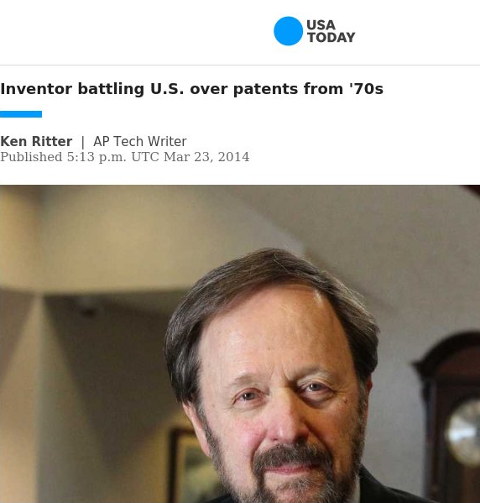

Reference: Inventor battling U.S. over patents from '70s
A PATENT which practically or at least metaphorically acts as a form of “submarine" (a form of an ambush) was mentioned a lot about a decade ago [1, 2] in relation to a high-profile case of Rambus. Rambus Incorporated was founded 28 years ago and it is considered a "licensing company," i.e. firm that only/mostly deals with patents. We mentioned submarine patents again last year in relation to OIN. It is a crude form of entrapment and courts can hear arguments to that effect; sometimes examiners too take such considerations into account when assessing whether or not to award a patent.
"It is a crude form of entrapment and courts can hear arguments to that effect; sometimes examiners too take such considerations into account when assessing whether or not to award a patent."A couple of days ago Venture Beat, which focuses on technology, did an interview (i.e. puff piece) with Gil Hyatt, "a man who created a “submarine patent” by continually following up his patent application with new details." Why the scare quotes there? A submarine patent is what it really is. Here's the introduction:
Gil Hyatt’s patience has been tested. After a 22-year delay, the inventor received a patent in 1990 for what he called the first microprocessor, or a computer on a chip. After cutting a deal with Philips Electronics, he began collecting royalties on a lot of electronics products that used the fundamental technology.
In Silicon Valley and elsewhere, Hyatt was viewed as a carpetbagger, a man who created a “submarine patent” by continually following up his patent application with new details. He claims he was a diligent individual inventor who protected his rights. But after the controversial patent award, and after getting 75 patents, the patent office never approved one of his applications again.
More than 40 years later, Hyatt said his important applications are still in limbo. (The typical wait time is 18 months.) He has made at least $150 million from the Philips deal, but he said he is fighting for “justice.” The case took a twist in 2014, when news emerged that the U.S. Patent and Trademark Office had a special way of flagging potentially controversial patents.
The United States Court of Appeals for the Federal Circuit recently issued a ruling on discussing the equitable doctrine of implied waiver; a decision that will be particularly important for those participating in the standard setting process and engaging with standard setting organizations, or SSOs as they are sometimes called. According to the Federal Circuit, failure to disclose patents and applications relevant to a standard may render a patent unenforceable based on an implied waiver. See Core Wireless Licensing S.A.R.L. v. Apple Inc., No. 17-2102, 2018 (Fed Cir. Aug. 16, 2018) (Before Reyna, Bryson, and Hughes, Circuit Judges) (Opinion for the court, Bryson, Circuit Judge).
This case began when Core Wireless Licensing S.a.r.l. (“Core Wireless”) sued Apple Inc. (“Apple”) for infringing U.S. Patent No.s 6,477,151 and 6,633,536, both of which were directed to an improvement in the way mobile devices communicate with base stations in a digital network. Apple, in turn, argued that the ‘151 patent was unenforceable because Nokia – the original assignee of the ‘151 patent – breached a duty of disclosure it owed to the European Standards Organization (“ETSI”) during ETSI’s development of technical standards addressing propagation delays in GPRS networks. Specifically, Apple argued that Nokia’s failure to disclose a Finnish patent application, to which the ‘151 patent claimed priority, while advancing a proposal to revise the ETSI GPRS standard rendered the ’151 patent unenforceable. While Nokia’s proposal was ultimately rejected and replaced by a competing proposal, Nokia did not disclose its Finnish patent application to ETSI until four years later.